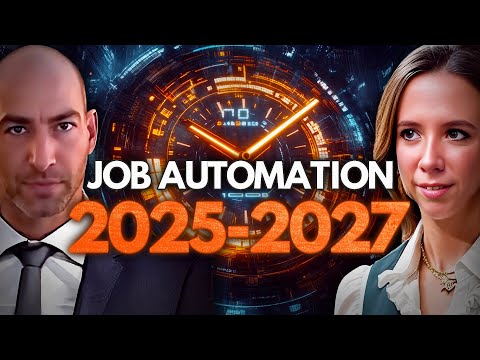The rapid advancement of AI technology will revolutionize knowledge work in the next few years, creating significant economic disparities and risks for knowledge workers, while emphasizing the need for individuals to adapt and become AI orchestrators to thrive in this changing landscape
Questions to inspire discussion
Positioning for Success
🚀 Q: How can I position myself to capture disproportionate value in the AI revolution?
A: Focus on being part of the 2% who position themselves correctly in the next 3-5 years, as they will corner abundance and create generational wealth similar to Ford and GM during the automobile era.
💼 Q: What timeline should I be aware of for AI's impact on knowledge work?
A: Prepare for the next 36 months (2025-2027) to fundamentally change knowledge work and digital capabilities, with autonomous agents executing complex tasks and Fortune 500 companies deploying hybrid workforces.
Industry Trends
🤖 Q: When will we see significant advancements in physical AI?
A: Expect physical intelligence to emerge with commercial humanoid robots by 2026, followed by the arrival of Artificial Superintelligence (ASI) between 2027-2030, though deployment will lag behind capability.
🏭 Q: What challenges will the AI industry face in scaling?
A: The scaling era (2030-2040) will encounter material constraints from rare earth metals, limiting robot production despite doubling capacity every 3 years, requiring decades to reach saturation.
Long-term Outlook
🌍 Q: How will the transition to full automation unfold globally?
A: The transition to full automation (2040-2060) will be uneven across economies, creating winners and losers based on the opportunity gap established by early adopters in the next 3-5 years.
⏳ Q: How urgent is it to make decisions about AI adoption and policy?
A: The window for making choices about cooperative ownership models and transition policies is closing rapidly, with the next 3 years revealing seemingly magical capabilities, though large-scale deployment will take decades.
Key Insights
AI Timeline and Impact
- 🚀 The next 3-5 years will be crucial for positioning oneself to capture disproportionate value in the AI Age, similar to the Industrial Revolution.
- 🤖 2025 marks the beginning of the "Automation Cliff" for knowledge workers, with physical intelligence emerging through commercial humanoid robots by 2026.
- 🧠 Artificial Super Intelligence (ASI) is expected to arrive between 2027-2030, but its deployment will significantly lag behind its capabilities.
Challenges and Opportunities
- 🌐 The "Scaling Era" from 2030-2040 will face material constraints, delaying widespread AI implementation.
- 💼 Global labor substitution is projected to fully materialize between 2040-2060, reshaping the workforce landscape.
Preparation Strategies
- 📊 Individuals and companies can assess their AI readiness and develop personalized strategies through the AI readiness survey and free consultation offered at firstmovers.ai.
#SyntheticMinds
XMentions: @HabitatsDigital @JuliaEMcCoy @DaveShapi
Clips
-
00:00 🚀 Two competing truths are emerging in the rapid advancement of AI technology, highlighting the complexities of its future.
-
00:55 🔮 The next three years will revolutionize knowledge work through automation, while a fully realized post-labor economy remains decades away.
-
02:16 🤖 First-generation humanoid robots enter the market with high costs, paving the way for advanced AI systems that self-improve, while production faces challenges from resource limitations in the coming decades.
-
03:23 🚀 In the coming decades, full automation will reshape economies unevenly, rewarding early adopters of AI with significant advantages and wealth before saturation occurs.
-
04:44 🔍 Jobs that will remain safe include skilled physical labor, high accountability roles, meaningful professions, complex relationship jobs, while capital owners of AI will thrive, leaving knowledge workers at risk.
-
05:33 🚀 Prepare for the automation cliff by becoming an AI orchestrator, developing unique human skills, and investing in automation opportunities.
-
06:16 🌟 The extended timeline for AI development allows for better adaptation, ownership models, and mitigates the risk of a catastrophic takeover, while the next three years will showcase transformative capabilities that raise questions about equitable value distribution.
- 07:19 🚀 The rapidly closing window for decision-making in AI's future emphasizes the importance of being a First Mover in shaping the direction we take.
-------------------------------------
Duration: 0:7:47
Publication Date: 2025-05-13T21:32:32Z
WatchUrl:https://www.youtube.com/watch?v=7yY3DI6EBr0
-------------------------------------

